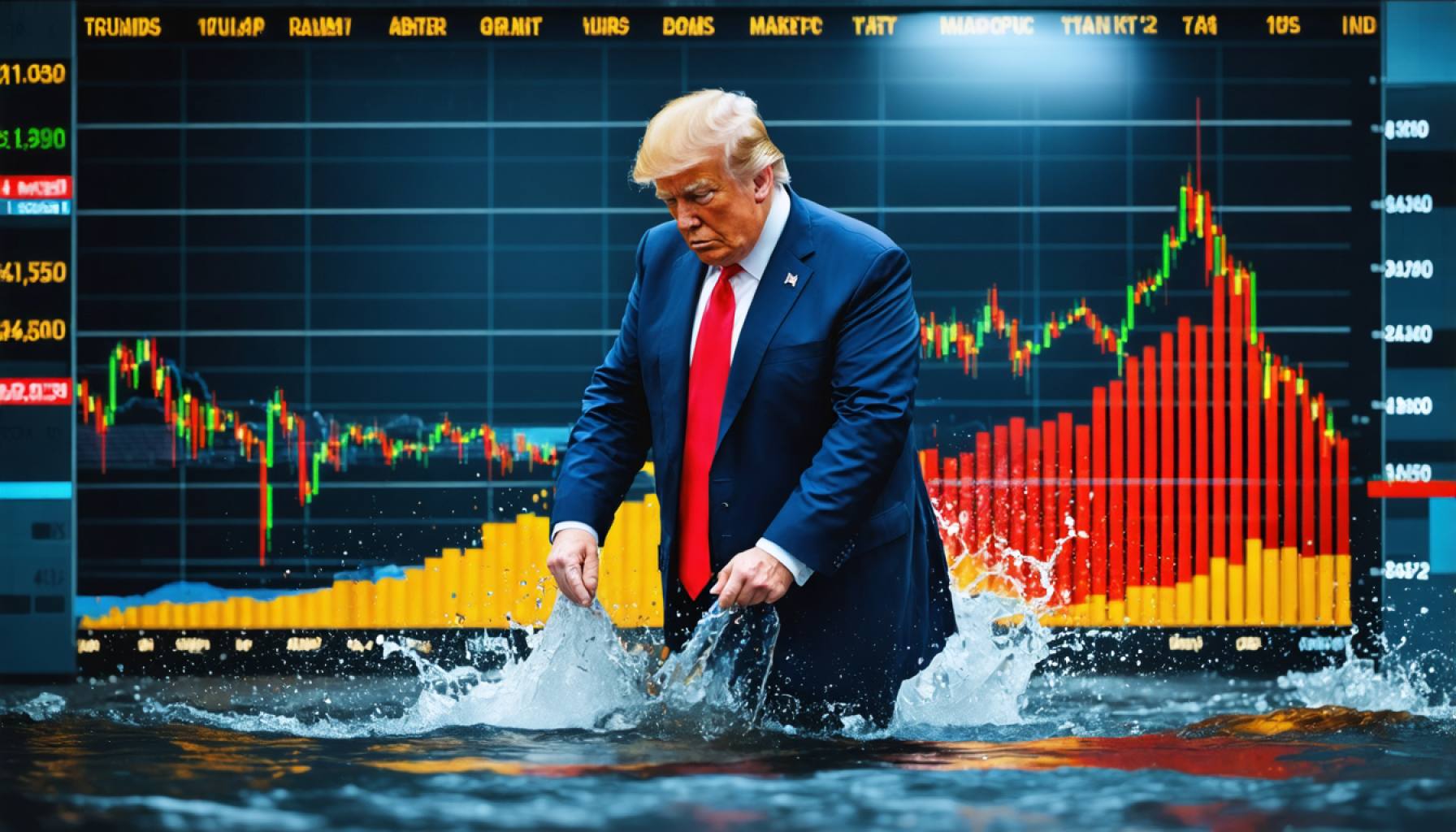- Global markets tumble in response to President Trump’s tariff announcement, sparking fears of a trade war.
- Major U.S. indices plummet: S&P 500 declines by 3.4%, Nasdaq falls 4.6%, and Dow Jones drops 2.6%.
- International markets, including those in Asia and Europe, feel the impact, highlighting global interconnectedness.
- Trump’s tariffs aim to revamp trade dynamics but risk disrupting established global economic relationships.
- The situation underscores the fragility of interconnected economies amid economic nationalism and strategic uncertainties.
- The ongoing scenario emphasizes the necessity for international cooperation to maintain economic stability.
A palpable tension electrifies the trading floors as the clarion call of opening bells unleashes a turbulent tide across global markets. The mere whisper of tariffs—turned to a roar by an overnight announcement from President Donald Trump—has prompted a dramatic plunge in stocks, akin to dark clouds descending upon Wall Street.
The numbers tell a stark story. The S&P 500, a bellwether for the U.S. economy, spirals downward by 3.4%, while Nasdaq, the tech titan, nose-dives 4.6%. Even the venerable Dow Jones, the emblem of American industry, finds itself tumbling 2.6%. These figures, stark and daunting, paint a picture of a market in upheaval, grappling with the shockwaves of a potential trade war.
But this storm does not rage in isolation. From the bustling avenues of Tokyo to the serene squares of Paris, and the bustling streets of London, markets bear the brunt of this American squall. Asian, European, and UK indices, too, find themselves dragged into the maelstrom, their usual resilience tested by the reverberations of economic nationalism.
Trump’s tariffs—envisaged as a bold gambit to recalibrate trade dynamics—risk upending the intricate web of global commerce. These measures, at once brazen and consequential, have sent economic analysts into a frenzy of speculation. Could this be a strategic masterstroke pushing for fairer trade terms, or a perilous brinkmanship that threatens to unravel decades of economic integration?
Amidst the clatter of falling stocks, the tremors of uncertainty underscore a crucial takeaway: the fragility of interconnected economies. In an era where a declaration from Washington can ripple through Tokyo and jolt Frankfurt, understanding and collaboration become more than just buzzwords—they evolve into imperatives.
While Trump’s economic strategy continues to unfold like the pages of an unfolding mystery, one thing remains abundantly clear—our world, intricately connected by the threads of trade, reminds us of the delicate balance required to maintain economic harmony. As traders adjust their strategies and nations recalibrate their alliances, the unfolding narrative remains a testament to the unpredictable dance of global trade.
The Hidden Impact of Tariffs: How Global Markets Navigate Economic Storms
Understanding the Ripple Effect of Tariffs on Global Markets
The tumultuous scene described in the original article highlights how sensitive global markets are to policy changes like tariffs. This event underscores the interconnectedness of the world’s economies, where decisions made in one country can have immediate repercussions across the globe. Delving deeper into this phenomenon reveals several additional insights and strategies for navigating such economic storms.
How Tariffs Influence Market Dynamics
1. Impact on Trade Relations: Tariffs, as a form of protectionist policy, often aim to protect domestic industries by making imported goods more expensive. While this might offer short-term gains in local employment and manufacturing, it can strain trade relations, leading to retaliatory measures from affected countries.
2. Consumer Pricing and Inflation: Higher tariffs on imports typically lead to increased prices for consumer goods. This not only affects household budgets but can also contribute to inflationary pressures, as companies pass on increased costs to consumers.
3. Supply Chain Disruptions: Global supply chains are finely tuned systems reliant on the free flow of goods across borders. Tariffs disrupt these networks, forcing companies to reconsider sourcing and logistics, which can lead to increased costs and delays in production.
Real-World Strategies for Businesses Affected by Tariffs
– Diversify Suppliers: By sourcing materials and products from multiple regions, businesses can mitigate the risk of supply chain disruptions due to tariff changes.
– Enhance Efficiency: Streamlining operations and reducing waste can help offset increased costs due to tariffs. Investing in technology and process improvements can lead to long-term savings.
– Engage in Hedging: Financial instruments, such as options or futures, can provide a buffer against currency fluctuations and other uncertainties arising from trade tensions.
Market Forecasts and Industry Trends
Experts predict that as long as trade tensions persist, market volatility will remain high. According to a study by the International Monetary Fund (IMF), prolonged trade conflicts can shave off global economic growth by nearly 1% in the long run. Investors and businesses should prepare for sustained unpredictability, with emerging markets being particularly vulnerable to such shocks.
Pros and Cons of Tariff Implementation
Pros:
– Protects domestic jobs and industries.
– Can reduce trade deficits by encouraging local production.
Cons:
– Leads to higher consumer prices.
– Provokes retaliatory tariffs, which can escalate trade wars.
– Disrupts global supply chains and hampers international cooperation.
Security and Sustainability Concerns
Economic policies like tariffs can lead to security concerns by fostering tense international relations. Additionally, sustainability initiatives may be undermined if countries prioritize economic nationalism over collaborative global efforts to tackle environmental issues.
Actionable Recommendations
– For Investors: Stay informed about geopolitical developments and diversify your portfolio to hedge against market volatility.
– For Businesses: Develop agile supply chains by incorporating digital technologies and exploring alternative markets.
Conclusion
Global trade intricacies demand a delicate balance, where strategic economic policies should be crafted with a long-term view of collaboration and stability. For more insights on navigating global markets, visit IMF or World Bank.
Understanding the broader implications of tariff policies and preparing for potential challenges can help individuals and businesses alike navigate the complex landscape of today’s global economy with resilience and foresight.
